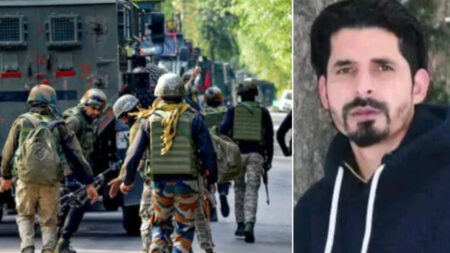On the 71st death anniversary of Sardar Vallabhbhai Patel, honourable Prime Minister Narendra Modi, along with many other Union ministers and leaders, paid tribute to India’s first home minister.
Sardar Vallabhbhai Patel was a remarkable leader of the Congress party. In his early days, he practised as a lawyer and later became an essential figure in the country’s freedom struggle. He became India’s first home minister and deputy prime minister of India and was famously known as the Iron Man of India.
He is revered and credited for his political insight and constant efforts towards integrating the princely states into the Union of India. He wrote a letter to Prime Minister Jawaharlal Nehru as deputy Prime Minister and Minister of Home Affairs of independent India in 1950.
He distinctly understood views of various stakeholders in governance and administration and their roles and responsibilities. His enthusiastic approach while managing the country’s complexity turned him into an accountable voice of the masses. He ardently bolstered the Indian freedom struggle by motivating people to fly the national flag at public places in 1922-23.
His careful handling of the integration of the princely states in a brief amount of time bears testimony to his ardour and devotion. His diplomatic manoeuvres procured the “accession” of princely states and contributed shape to India, arranging these areas according to the constitutional framework.
The inner power conflict and lack of democratic values in the Congress were evident while electing the foremost prime minister of independent India. It is crucial to note that 12 out of 15 Congress Committees favoured Patel. Nevertheless, Nehru was appointed as the prime minister at this critical point.
Sardar Patel’s famous letter to Nehru, dated November 7, 1950, clearly underlines his strong criticism of Nehru’s handling of Tibet, China, and Kashmir. The delay of 41 years in posthumously granting the prestigious Bharat Ratna to Sardar Patel is another point that highlights Congress’s reluctance in giving Patel the credit he earned as a nation builder.
Along with embarking on the journey involving the humungous task of unification, the Iron Man of India proved to be instrumental in reinforcing the steel frame of India — the All India Services. In 1947, he set out to culturally connect the shared heritage and spirit of Indians by remaking the demolished Somnath temple that would portray the story of India’s resurrection, the triumph of construction over destruction.
Under the governance of honourable Prime Minister Narendra Modi, he has endeavoured several initiatives conforming with Patel’s ideals. A capacity-building programme known as the steel frame of India is being further bolstered to prepare the civil servants of the future through Mission Karma Yogi.
This programme strives to overcome the hurdles of a leading technologically savvy world, enabling the ease of living for citizens, providing the best governance possible, and turning India into the world’s most influential civil services.
The government is passionately executing Patel’s dream with the whole development of Somnath, apart from creating the temple complex and more attractive.
The Statue of Unity was unveiled on Patel’s 143rd birth anniversary, the tallest statue globally. His birth anniversary, October 31, is celebrated as “National Unity Day”. The Ek Bharat- Shreshtha Bharat programme further fortified the sustained and structured cultural nexus between various regions.
It is worth appreciating that our society owes everything to our forefathers. They toiled hard to systematize the framework that encourages individuals to grow, accomplish their capacity and scale new stature for the nation.
The death anniversary of Sardar Patel is a worthwhile opportunity to pay tribute to the immeasurably sacrifices of the countless known and unknown individuals who contributed largely and strive to build New India as a tribute to them.












